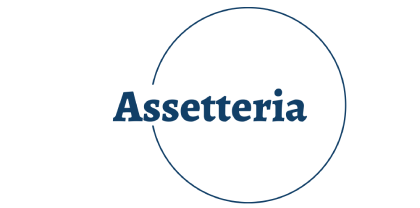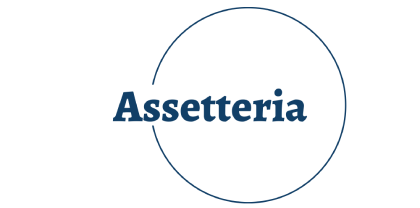5 Reasons To Use Asset Management ERP Software
5 Reasons To Use Asset Management ERP Software
Asset management ERP (Enterprise Resource Planning) software is a valuable tool for organizations looking to effectively manage their assets.
Here are 5 compelling reasons to use asset management ERP software:
1. Optimized Asset Utilization:
Asset management ERP software allows organizations to track the location, availability, and usage of assets in real-time. This tracking ensures that assets are used efficiently and that they are in the right place at the right time. The software often includes preventive maintenance scheduling features. This means that maintenance tasks are scheduled based on asset usage and operational hours, reducing the risk of breakdowns and unplanned downtime.
Asset management ERP software provides data and analytics on asset usage patterns. Organizations can identify underutilized assets and make decisions on whether to redeploy or retire them to optimize their asset portfolio. With insights into asset availability and usage, organizations can allocate resources effectively. This includes assigning personnel, tools, and materials to tasks involving specific assets. By proactively managing asset usage and scheduling maintenance at convenient times, the software helps reduce asset downtime. This ensures that assets are available when needed, leading to increased productivity.
Asset management ERP software supports the entire asset lifecycle, from procurement and deployment to maintenance and retirement. This comprehensive approach ensures assets are used optimally throughout their life. Optimized asset utilization results in cost savings. Reduced downtime, fewer breakdowns, and effective maintenance strategies all contribute to lowering operational and maintenance costs.
2. Preventive Maintenance and Asset Health Monitoring:
Asset management ERP software allows organizations to schedule regular preventive maintenance tasks for their assets. This includes inspections, servicing, and replacements of parts to keep assets in optimal condition. The software can send automated alerts and reminders for scheduled preventive maintenance tasks. This ensures that maintenance activities are conducted on time and reduces the risk of missed maintenance schedules.
This software often includes real-time monitoring of asset health and performance. This monitoring can involve sensors and data analytics that assess the condition of assets while they are in operation. The software collects and analyzes data related to asset health. This data can include metrics such as temperature, vibration, fluid levels, and other indicators of asset condition. Using historical data and real-time monitoring, some ERP systems offer predictive maintenance capabilities. They can predict when an asset is likely to require maintenance, allowing organizations to proactively address issues before they lead to breakdowns.
Preventive maintenance and asset health monitoring contribute to cost savings by reducing the need for emergency repairs and replacement of assets. It also minimizes the impact of asset-related downtime on operations.
Asset health data collected by the software supports data-driven decisions about maintenance priorities, resource allocation, and asset replacement strategies.
3. Inventory and Spare Parts Management:
Asset management ERP software tracks spare parts and inventory related to asset maintenance. It provides real-time visibility into the quantity, location, and usage of spare parts and materials. The software often includes a catalog of available spare parts, making it easy for maintenance teams to identify and order the right components for repairs or preventive maintenance. Organizations can set minimum and maximum stock levels for spare parts. The software monitors stock levels and sends alerts when inventory falls below the minimum threshold, ensuring that parts are reordered in a timely manner.
By tracking spare parts usage and replenishing stock as needed, the software helps organizations optimize inventory levels. This reduces the carrying costs associated with excess inventory while ensuring that critical spare parts are readily available. Effective inventory management reduces the cost of carrying excess stock. It also minimizes the cost of rush orders for spare parts due to stockouts. This leads to cost savings for the organization.
Asset management ERP software streamlines the process of ordering spare parts by automating purchase orders, tracking deliveries, and managing supplier relationships. Organizations can manage their relationships with suppliers by tracking performance, pricing, and delivery times. This helps in choosing reliable suppliers and negotiating better terms.
4. Cost Control and Budgeting:
Asset management ERP software helps organizations calculate the TCO for each asset. This includes acquisition costs, maintenance expenses, repair costs, and eventual replacement costs over the asset's lifecycle. The software collects historical data on maintenance and repair expenses for each asset. This data is valuable for assessing past costs and predicting future costs.
By analyzing historical data and asset condition, organizations can plan maintenance and repair activities more effectively. They can schedule maintenance tasks at the right time to minimize costs and extend the asset's lifespan. Asset management ERP software often includes budgeting tools that allow organizations to set and manage budgets for maintenance and asset replacement. These budgets help control expenses and allocate resources appropriately.
Some ERP systems offer predictive maintenance capabilities, which help organizations predict maintenance needs and associated costs. This proactive approach reduces the risk of unexpected expenses. With insights into maintenance costs and budgets, organizations can allocate resources more effectively. They can ensure that sufficient funds are allocated for critical maintenance activities.
5. Compliance and Reporting:
Asset management ERP software helps organizations ensure that their assets adhere to legal and regulatory requirements. It provides tools for tracking compliance with industry-specific regulations and standards. The software often includes a centralized repository for storing and managing compliance-related documents, such as inspection reports, certificates, and permits. This ensures that necessary documentation is readily available for audits and compliance checks.
Organizations can set up automated alerts and reminders for compliance-related tasks, such as inspections and certifications. This ensures that critical compliance activities are conducted on time, reducing the risk of non-compliance. Asset management ERP software maintains an audit trail of all compliance-related activities and changes made to assets. This provides a historical record that can be used for compliance reporting and audits.
The software includes reporting tools that allow organizations to generate compliance reports. These reports can be customized to meet the specific requirements of regulatory authorities and internal stakeholders. Compliance tracking often includes features for scheduling and conducting routine inspections of assets to ensure they meet safety and regulatory standards.
In summary, asset management ERP software helps organizations optimize asset utilization, implement preventive maintenance strategies, manage inventory and spare parts, control costs, and ensure compliance with regulations. These benefits contribute to more efficient and cost-effective asset management.

